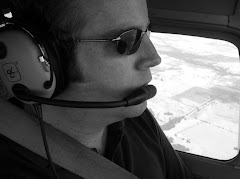Well, my grand social blogging experiment didn't quite work the way I wanted. Sorry for the update delays. I knew this past month was gonna be tough, and I thought I was prepared, but nope. I think I can summarize my December in one picture.
 After CFI ground school wrapped up a week or so after Thanksgiving, we took to the books hard while we waited for our turn at the FAA Flight Standards District Office for our CFI Initial oral exam and checkride. Lucky me... mine was one of the first scheduled, for December 15th, to be followed by the checkride on the next day.
After CFI ground school wrapped up a week or so after Thanksgiving, we took to the books hard while we waited for our turn at the FAA Flight Standards District Office for our CFI Initial oral exam and checkride. Lucky me... mine was one of the first scheduled, for December 15th, to be followed by the checkride on the next day.After a handful of sleepless nights leading up to that Monday, I arrived at the FSDO (located at the Fort Worth Alliance Airport) and met my examiner, who promptly quizzed me about everything I've learned since I've been here. Five hours later, I headed home with a promise that we would continue for another hour or two the next day to wrap up. Sure enough, another two hours on Tuesday and we were done.

I can't take anymore. I feel like I just gave birth... to an accountant!
To complicate things, that Tuesday was socked in with the first big winter weather of the season. Freezing rain, low ceilings... unflyable, so we rescheduled the flight for the 18th. And of course, the 18th rolled up with no change in the weather, so we rescheduled for after Christmas... the 29th.
ATP closed down for the holidays which, since I live here, gave me plenty of time in an empty building to stew over my remaining checkrides. It was a long week, but fairly productive.
By the 29th the weather had cleared up beautifully. About 40 degrees and dry, with barely any wind. The weather gods were smiling on me this day. Instructor Walt and I take a quick Seminole flight up to Alliance Airport to pick up the FAA examiner. A quick preflight, and we're off. I was nervous as hell, to be honest... and it showed. After teaching the examiner (as I would a first-time flyer) the finer points of taxiing, I accidentally skipped a checklist before heading out to the runway... something I had never done before. The tower cleared me to take off, and I realized my mistake. Instead, I nervously asked the tower for clearance to taxi back to the run-up area, which was approved. I headed back to the run-up area and completed my checklist. The examiner stayed silent.
It was only after takeoff, when I realized that I hadn't busted this checkride, that my nerves calmed down and I was able to concentrate and deliver a pretty nice flight. Flew northwest to Lake Bridgeport and did lots of maneuvers... slow flight, stalls, Vmc demo, drag demo, single-engine failure, turns around a point, then back to Alliance for short-field takeoffs and landings, and a single-engine landing. Checkride passed, and I can now call myself a Certified Flight Instructor.
I had the Instructor-Instrument checkride on the 2nd, which was nearly identical to the original Instrument checkride in October and went pretty well. Funny how much I needed to refresh on, though... a lot of this stuff tends to slip when not used for a while.
One more remains... the Single, scheduled for tomorrow but moved to Wednesday due to more of this crap. What the hell... I'm already a month overdue and the coffee's still free.
 The cord gets cut this week, and then I get to decide what to do with the rest of my life. Suggestions graciously appreciated.
The cord gets cut this week, and then I get to decide what to do with the rest of my life. Suggestions graciously appreciated.







